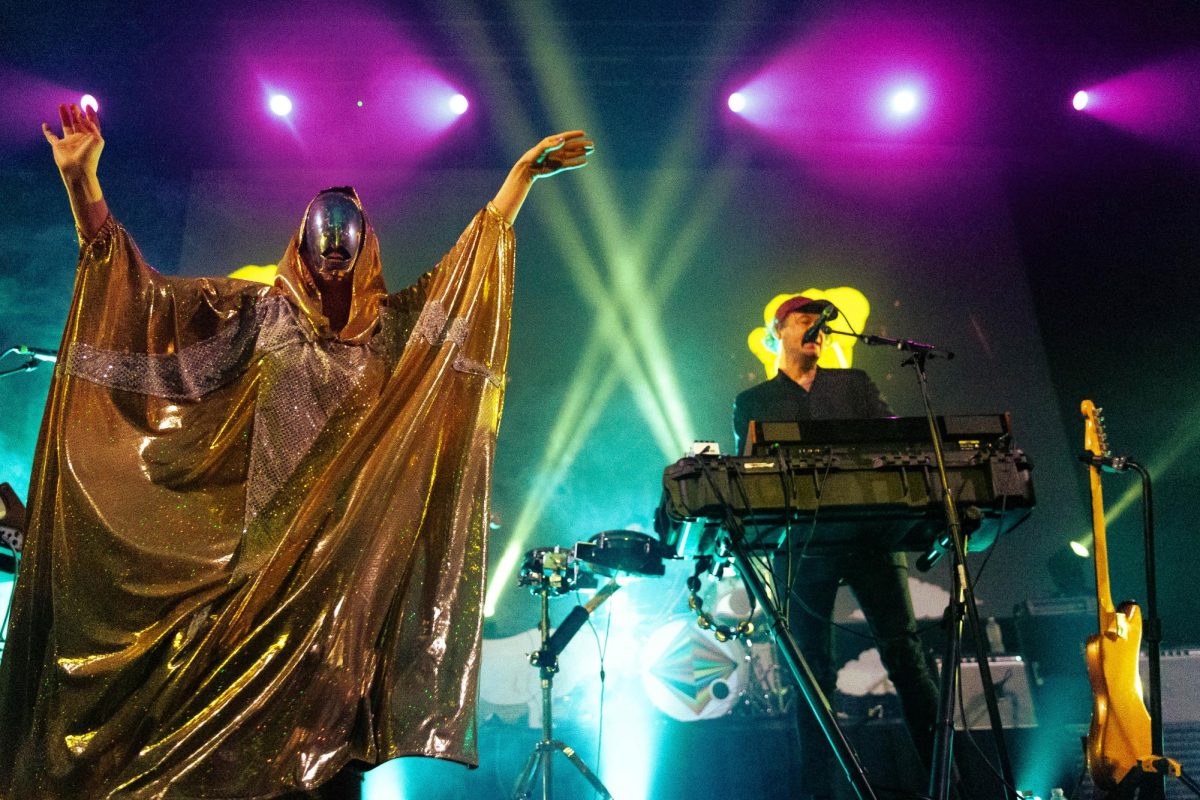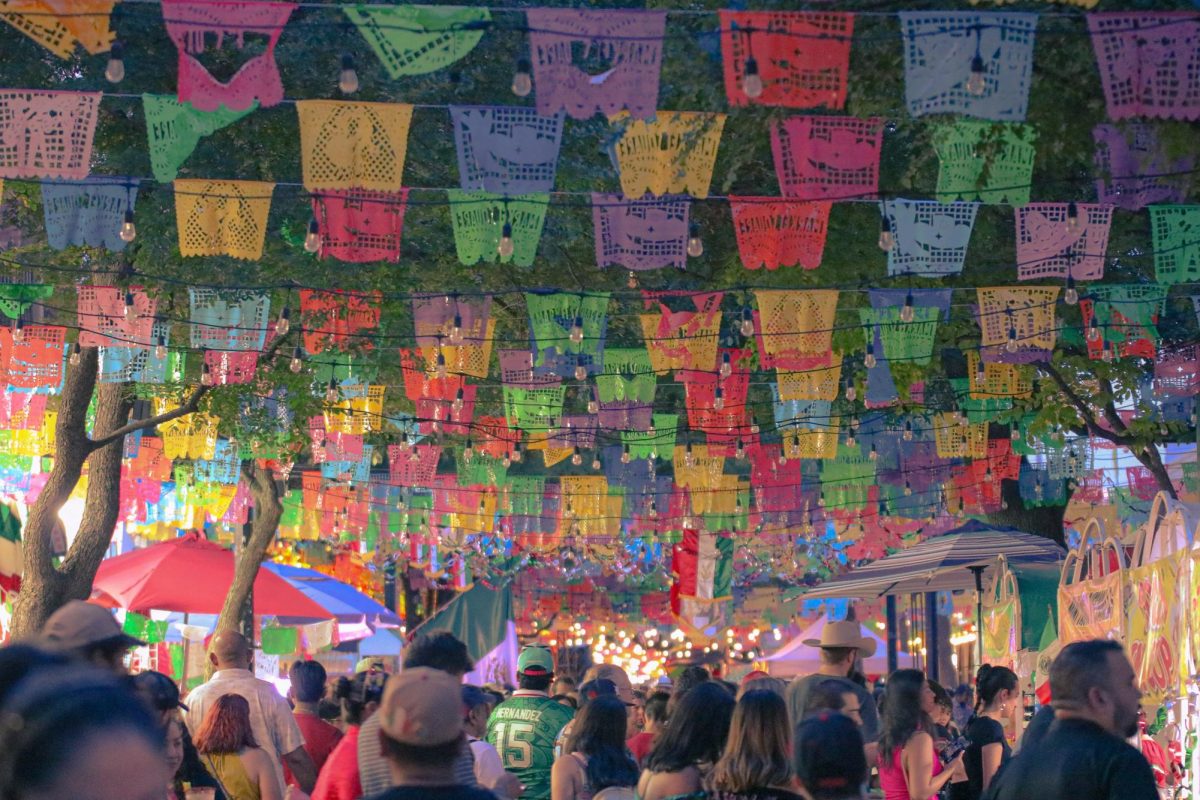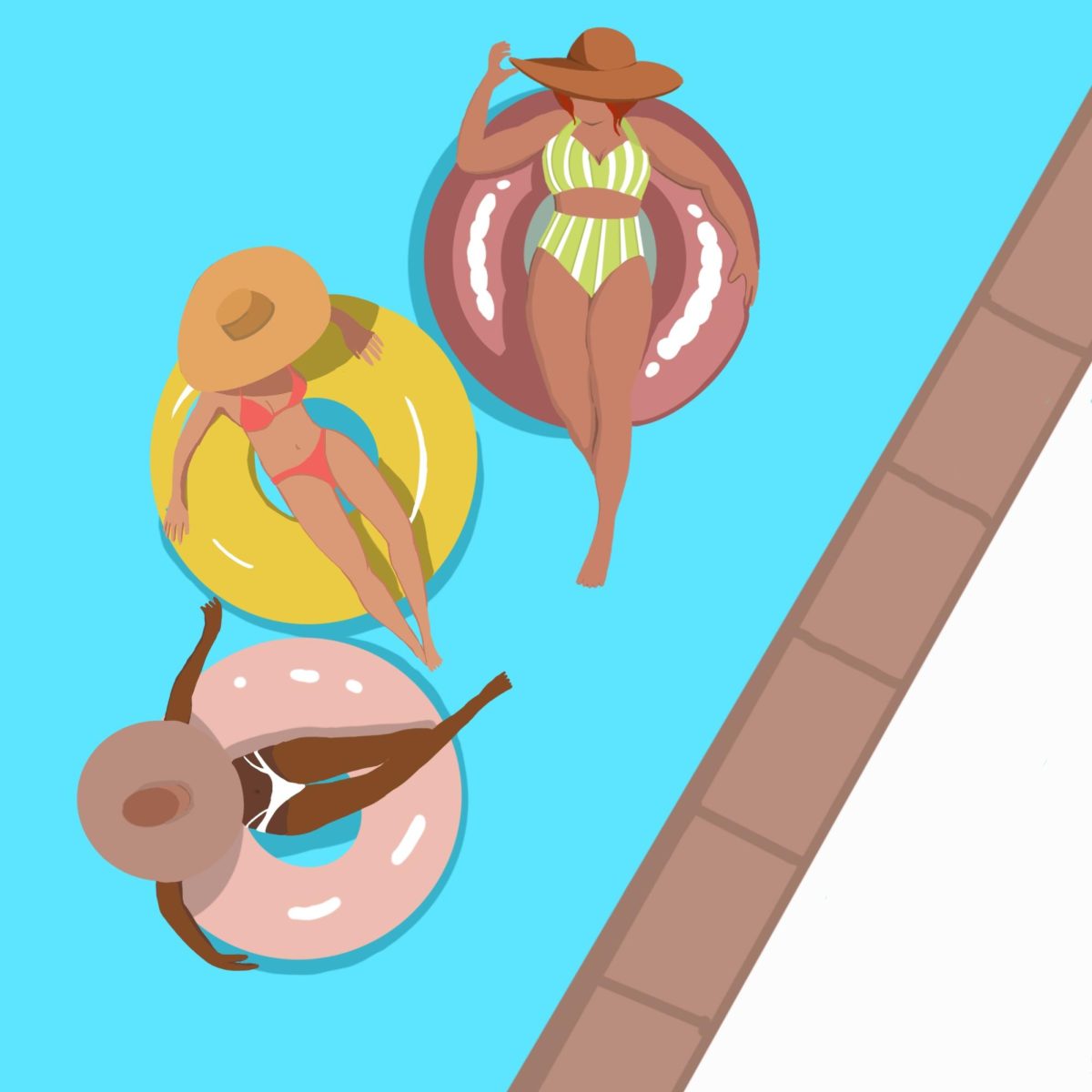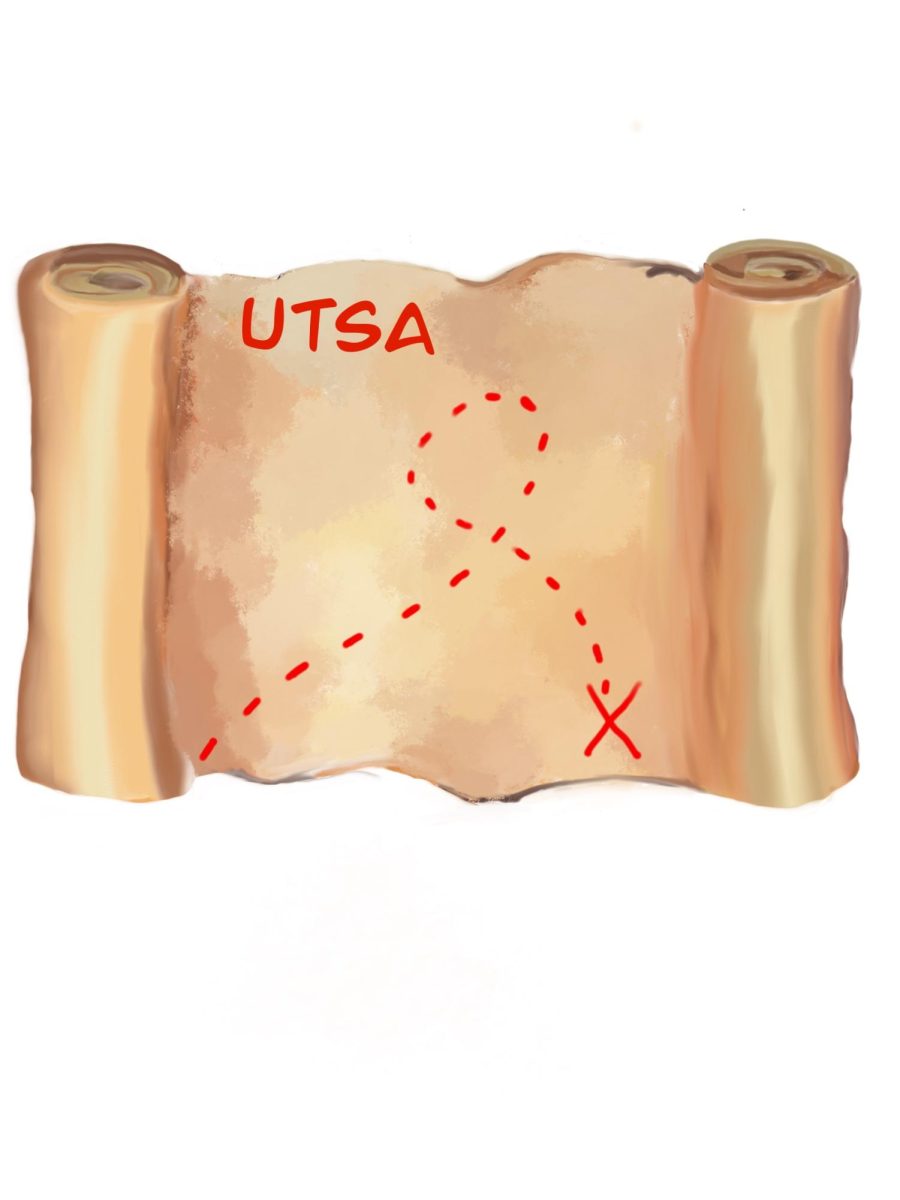_annie_labatt__gallery.jpg)
Patrick Kay/ The Paisano
On Oct. 18, the San Antonio Museum of Art’s biggest lecture room was completely sold out with people lined along the stairs and squeezed against the back wall, all for the chance to learn about art history from a highly qualified professional.
The eager audience could not hold back their enthusiasm and began chanting as if they were at a Spurs game for the star player, Annie Labatt, to take the court. After a few, quick introductions, the overhead lights dimmed and a single podium light glowed on Labatt’s smile as she began her presentation on the “Bison” cave paintings in Altamira, Spain.
Annie Labatt, a native of San Antonio, has finally returned after a 16-year odyssey of exploring art history around the globe. After graduating from St. Mary’s Hall in 1997, Labatt attended Barnard College in New York, where she earned her Bachelor of Arts in history.
Since then, she has gone on to receive three master degrees, one from the University of Glasgow in Scotland and two from Yale University, before earning her Ph.D. in Byzantine art history from Yale University.
During this time, she also held fellowships at Dumbarton Oaks (Harvard University) and at the Metropolitan Museum of Art in New York. Labatt was awarded the Rome Prize from the American Academy of Rome to conduct research on Medieval and Byzantine art in Rome for two years.
Now, Labatt has returned to San Antonio, not only to share her knowledge and experience with UTSA students as a professor of art history, but also to share it with the entire San Antonio community through her SAMA lecture series.
The lecture on the Bison at Altamira, Spain marked the start of Labatt’s lecture series called Art History 101: No Exams, No Papers. This series will take place at SAMA once a month until June and will cover the cave art of prehistoric Spain to nineteenth-century Romantic Art.
During these lectures, Labatt will chose a specific work of art she feels passionately about and feels facilitates a broader discussion about its time period.
As explained by Labatt, this lecture series can be thought of as “book club, happy hour and art history all in one.”
Following the first lecture, Labatt further discussed her series.
What made you want to do an Art History lecture series at SAMA?
“My genesis for this project was that I was talking to a lot of people around my age, 30s and 40s, and I’d say, ‘Oh, I do Art History’, and they would say, ‘Gosh, I wish I had taken an Art History class’ or ‘I wish I could take one, right now,’ missing that intellectual craving that generated all those people on Friday (Oct. 18). Just desiring to be able to talk about art history and what it is. This really was the impetus to being like, wow, it would be cool if I could do a mini art history, make it more social, but have a context for giving the span of art history through major masterpieces.”
Out of all pre-historic art, why did you choose to do your first lecture on the Bison at Altamira, Spain?
“Partly because I think that they are just magical. Those beasts are amazing, but also because, by pure accident, sort of on a whim, I happened to go and see those fake neo-print caves. And so, there is something personal and emotional about that too, because I was there. I’m still so overwhelmed by those amazing images. I really want to be able to share that kind of feeling in this lecture series.”
“Altamira wouldn’t naturally be on anybody’s map, as it wasn’t on mine. So maybe, this is a way that people will be able to not only think about that blue print of art history, that trajectory, but also think, ‘Oh well, I’m going to take a trip to Spain. I want to go see those bulls.’ You know, do something they wouldn’t have done otherwise, opening a new portal for the people here.”
As displayed by the big turnout for the first lecture, people obviously have a desire to educate themselves about art history. What do people stand to gain from the study of Art History?
“I remember when I took my first art history class, and I started to see things afterwards. Everything sort of had meaning, every column and capital. There is history in that shape and form. And I don’t know. It made me more aware of my surroundings. I guess that is why you read books and travel, so you can see more and shake up your world. I hope that is what people stand to gain from it. That they will think about the connections between our history and that history. Our world can get so small and I hope this is a way to bust through those walls.”
Since leaving San Antonio you have had the opportunity to experience many different places. Why did you decide to come back to San Antonio?
“I love all those big cities and all the stuff that is going on in them… but there is a point at which you feel like in New York, I could never do this lecture series. I could have never walked into the director of an institution and been like ‘I want to do this.’ Nobody would have taken me up on it. There is something about San Antonio that is so open and so excited and encouraging. It is just an incredible community.”
“I love those experiences (in New York, Chicago, Rome, etc). I really, really do, and I’m so glad I had them, but in a sense I feel like I was on that path to get a lot of lessons and learn a lot of things so I could bring them back here and make that difference.”
“It is so different from when I was here in high school. I left in ‘97. UTSA was a tiny place and the art scene was nothing… I hope I can be part of this blowing up in San Antonio of this art scene. I think too, there is a lot of contemporary art, a lot of exciting stuff happening there, and I would like to create a sort of balance between the history of it.”
Labatt’s next lecture will be this Friday, Nov. 15, at SAMA. She will be discussing the “Nike of Samothrace” from the Greek Hellenistic Period. The lecture will be followed by a reception, where attendees can continue to explore and discuss the significance of art history among themselves and the ever-inspiring Annie Labatt.











